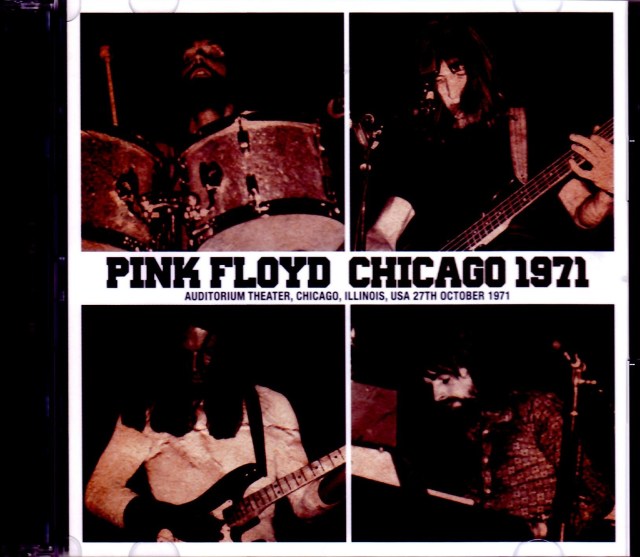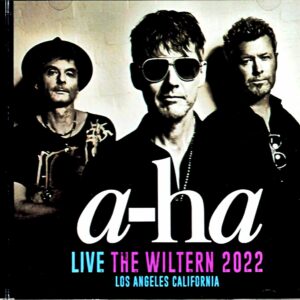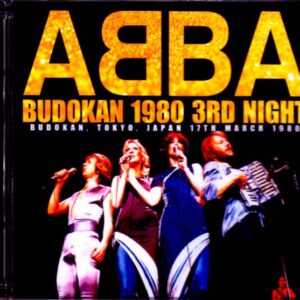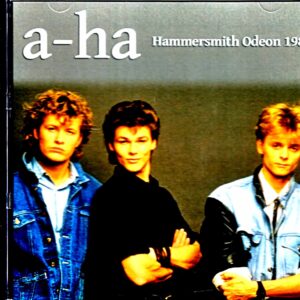Description
From the 1971 North American tour that began on October 15th after Hakone Aphrodite and Osaka in August, and that Pompeii recording, the Chicago performance on the 27th has been upgraded by an amazing amount! This performance, which has not been spotlighted for a long time, is finally here! However, there may be a surprising number of people who are wondering, “October 1971… Chicago performance?” The recording of this day is mainly known as the 2nd Gen source that appeared on the Floyd specialty site in 2013, but although this is a good mono AUD recording, the pitch disturbance that occurred in the equipment during the local recording (※ Probably a problem with the battery or deck drive system) remains as it is, and in addition, the hiss noise is noticeable overall. It was a difficult public source. This was re-corrected to improve the sound image as much as possible, and released in 2013 as “CHICAGO 1971”. However, because the restoration required skill and perseverance, other labels seemed to avoid releasing it, and although the recordings remained, there were almost no titles, making it a performance date like an air pocket in 1971. Since the release itself was not blessed, it is not surprising that people do not remember Chicago in 1971. However, just the other day, an upper source that can be said to be completely different from this sound source appeared on the Internet, and it excited sound source fans all over the world. The source itself is the same as the above-mentioned gift from our store (※ hereinafter referred to as the already released board / Tape 1), but this is the sound of a different tape (= Tape 2) that branched off from the master and followed a different route from the already released board, and the sound remained on this with amazing vividness. Especially the upper part of the show from the middle onwards (※ Disc 2 in this work) is so remarkable that it cannot be compared to the source used for the already released board (= Tape 1), and even the pitch disturbance, which was the biggest drawback of the original recording, has been almost perfectly resolved, and all scenes have regained the ideal sound image that they should have, which is surprising twice. The fact that the restoration was completed with the sound transferred from Tape 2, not Tape 1, makes a decisive difference. Another thing to note is the tape deck used to extract the sound from Tape 2, which is the famous Nakamichi “ZX-7”. The ZX series (※ ZX-5, 7, 9) manufactured by a legendary audio equipment manufacturer that once existed in Japan is still known as Nakamichi’s masterpiece as of 2018, and is a machine that has excited audio fans around the world with its drive system with logic circuits and a variety of manual calibration functions that maximize the potential of the tape. Although the sound on Tape 2 was in a much better condition than on Tape 1, the fact that it was a 2nd Gen cannot be denied. However, the output accuracy of Tape 2 played on the ZX-7 formed the sound with a waveform that would not be obtained on an ordinary deck, and the grade achieved was such that it could be considered the original sound of Tape 2 used = 2nd Gen Chicago in 1971. Let me give you an example. First of all, the previously released version had severe hiss noise throughout, and the localization was slightly to the left, with the output of the right channel being slightly weaker. In particular, in “Echoes,” the output of the right channel decreased from around 17:16 in the second half, and at 18:22 the sound was almost completely from the left side (and this continued until 26:02), and there were still traces of pitch disturbance and poor sound image accuracy that had not been completely corrected. However, this work, which transferred Tape 2 from the ZX-7, has a perfectly centered position, and the overwhelming (※ truly amazing) mitigation of hiss noise gives the sound a sense of stability in the soft sounds and a sense of upper depth in the midrange, and the deterioration section in the latter half of the aforementioned “Echoes”, which was only in the right channel, forms a sound image in both channels without any problems. Even in the ringing scene in the middle, the slide guitar, which sounded flat and shrill in the previous version, has regained its high-quality sound and three-dimensional depth, and you can enjoy many scenes that foreshadow the sharp sound flashes that were probably in the 1st Gen and original recordings. Similarly, “A Saucerful Of Secrets”, which had noticeable deterioration, also benefits greatly from the absence of hiss noise and pitch fluctuation, and the previously slightly blurred bass and treble response have regained their original sharpness. The muddy sound of the rattling sound in the middle, which was noticeable in the already released version, has been made clear and the intersection of the sound has been made clear, and the resolution that can face the expression of this day head-on has been realized for the first time in the history of source. This upper feeling is particularly noticeable from the middle of the show = Disc 2, but it is surprising that the first half of the show has an upper feeling that is not inferior to it. In particular, “Set The Controls For The Heart Of The Sun” is the first appearance of the recording on-off part from 13:13, which was missing sound in the already released version, and although it is about 1.5 seconds, it is longer than the already released version and is recorded faithfully to the original recording. In addition, the inter-song scene at 18:51, which was faded in the already released version, appears in the original recording, and it is a nice advantage that you can hear it for a moment in a long form. In “One Of These Days”, the rhythm is canceled once in the middle and latter half, and the unique expression of this day appears in an even more vivid form, and the very rare sound check that proceeds while the sound of dripping water (※ Rain sound by the SE in the venue? Bubble sound by synthesizer / sound of water bubbles popping?) is endlessly inserted at the same time as the final song, you should be able to see that the outline of the sound of the drops is sharper. By the way, on Tape 2, the sound check where this water sound overlaps was recorded only until 11:05, and after that, about 10 seconds until the start of the next song (= until the end of Disc 1), which is originally a little more, was adjusted and compensated for by adjusting Tape 1 = the already released board, which has that part remaining, and the sound of all the existing scenes was used up to maintain the full length. And in the second half of the show, Disc 2, the sound quality is further improved. What everyone notices within 10 seconds of starting the disc is that the pitch disturbance and sound image fluctuation are almost perfectly gone. In the previously released version, the pitch deviation and sound fluctuations start to become seriously noticeable immediately after the start of Disc 2, but here, such problems do not occur, and the outstanding accuracy and stability are maintained. This can be seen from the fact that the pitch of the scream that comes in the middle of “Careful With That Axe, Eugene” is almost a semitone different between the previously released version and this work. In “Cymbaline”, Gilmour’s singing voice, which was once deep, comes forward by about half a step, making it easier to grasp the melody line, and the transparency has also reached an all-time high. In particular, the footstep skit scene feels an order of magnitude less hiss noise than the previously released version, but this is also 20% the effect of digital remastering, and the remaining 80% can be said to be the extraction power of the original sound by the ZX-7, which was created by the manual calibration and the azimuth accuracy of the three heads. The happening that only happens on this day, when Gilmour somehow starts laughing during the singing after the footstep scene and fails to sing part of the lyrics (or can’t sing), will appear in a more vivid sound image, instantly making the impression of the already released board a thing of the past. Amid such an overwhelming improvement in sound quality, the 1971 Chicago performance will unfold one interesting performance after another that is unique to this period, but on the other hand, in terms of the program composition, the band will start playing a prototype version of “THE DARK SIDE OF THE MOON” from January 1972 at the end of this North American tour, so the show’s assembly itself will change from the ground up. In other words, the North American tour program at this time was the final form of the show that Floyd had built up until then, without the “madness” involved, and one of the important sound sources from the time when such a musical paradigm shift was counting down has finally acquired a quality that can withstand unraveling it. Fortunately or unfortunately, this Chicago performance is still a less well-known sound source, so many people may be listening to it for the first time. However, this work is of a quality that will not only fully satisfy the first impression of such people, but also the latest work that is sure to amaze those who are familiar with the existing sound with the extraordinary sound dynamism and precision of Tape 2. Live at Auditorium Theater, Chicago, Illinois, USA 27th October 1971 UPGRADE Disc 1 (74:16) 01. The Embryo 02. Fat Old Sun 03. Set The Controls For The Heart Of The Sun 04. Atom Heart Mother 05. One Of These Days Disc 2 (69:50) 01. Careful With That Ax, Eugene 02. Cymbaline 03. Echoes 04. A Saucerful Of Secrets






Reviews
There are no reviews yet.